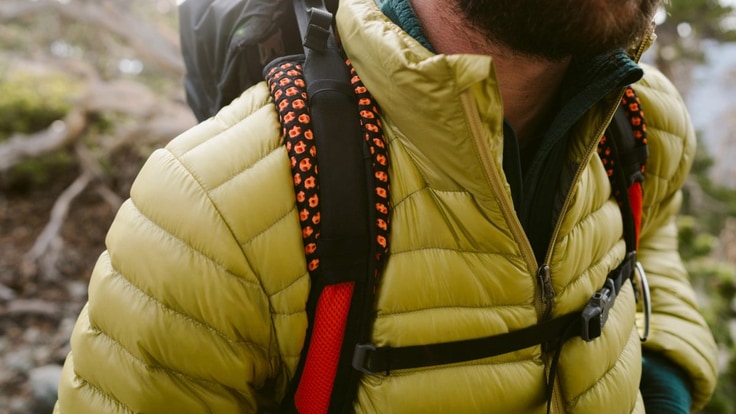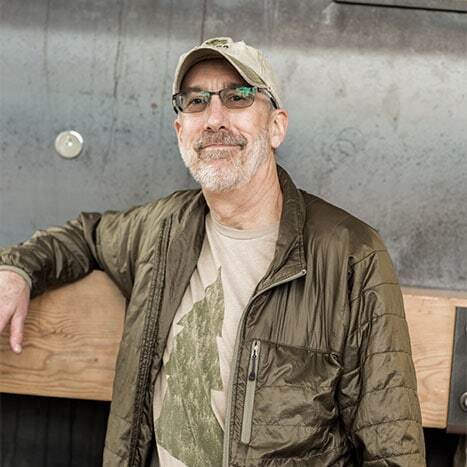Down fill power is a number you encounter even when you're not delving into technical specs or shopping for outdoor gear. If you've ever pondered the virtues of an 800-fill-power down duvet with a 650-thread-count Egyptian cotton cover, you'll know what I mean.
What Does Down Fill Power Tell You?
Fill power is a number that indicates the relative quality of down. The number comes from a lab test that measures how many cubic inches of loft one ounce of that down fill produces. Higher fill power numbers indicate greater loft and insulating efficiency. (It's important to note that down fill power does not tell you how warm a jacket or a sleeping bag will be because too many other factors affect warmth, including how much of that down fill is in the jacket or bag.)
Lofty Down Is Warm Down
Down's reputation as the ultimate insulating material for outdoor adventures derives from its ability to compress into a small, packable shape and then puff back up later. The key to down's warmth is the formation of small air spaces within the down "plumules" (superfine featherlike plumage). Higher quality down fluffs back up to create more loft after compression, providing more heat-trapping air space within the down fill.
The Down Fill-Power Test
The test is typically done by filling a large cylinder with one ounce of down. A lightly weighted disk is placed on top, and begins to slowly sink and compress the down. After exactly one minute, the position of the disk is recorded and the volume of down compressed at that point is calculated.
A result of 450 cubic inches of down equates to 450-fill-power down. More resilient down compresses less and will loft higher. It also yields a higher test result—900 fill power is about as good as down gets.
Where High Fill Power Makes Sense
Premium fill-power down commands a premium price. It's used to keep jackets ultralight and ultra packable. So if you're trying to save weight and space in a pack or you want a super sleek winter jacket, a 900-fill-power jacket is worth considering. If overall weight and bulk aren't important to you, get a super puffy jacket and don't worry if it only has 500-fill-power down.
Fill Weight: An Important Spec You Rarely Find
A 900-fill-power down jacket that has only 30 g of down fill won't be warmer than a 450-fill-power jacket with 100 g of down fill. In theory, 50 g of 900-fill-power down would be the same warmth as 100 g of 450-fill-power down; it would also compress to about half the space. Very few jacket makers report fill weights, though. And any simple formula for warmth calculation won't account for differences in how the down fill is distributed within baffles and around the jacket.
The Rest of the Warmth Story
Your other clothing layers, the jacket's shell material and many other design details also figure into how warm you will feel. Couple that with differing metabolisms of people and widely varying weather they might encounter, and you can understand why a temperature rating on a jacket wouldn't be meaningful.
Down Fill Power and Synthetic Fills
Synthetic fills have no equivalent test to down fill power, and each brand of synthetic insulation has unique characteristics. So, it's not possible to use down fill power to compare insulation efficiency to any synthetic fill, and there's no way to compare the efficiency of two different synthetic fills.
To learn about other factors to consider when choosing a down or synthetic fill, read How to Choose Insulated Outerwear and Down vs. Synthetic: Which Insulation is Right for You?
Sleeping Bags Do Have Warmth Ratings
Unlike jackets, backpacking sleeping bags have ISO (International Organization for Standardization) ratings, which provide an apples-to-apples comparison of bag warmth. Much like EPA gas mileage ratings, actual experience varies, but the spec does allow you to reliably compare relative warmth between any two ISO-rated bags. A higher fill-power spec can then be used to explain why one bag weighs less yet has the same temperature rating. That lighter bag will also pack down smaller. The ISO spec has a lot of nuance to it—for more details read How to Choose a Sleeping Bag for Backpacking.

